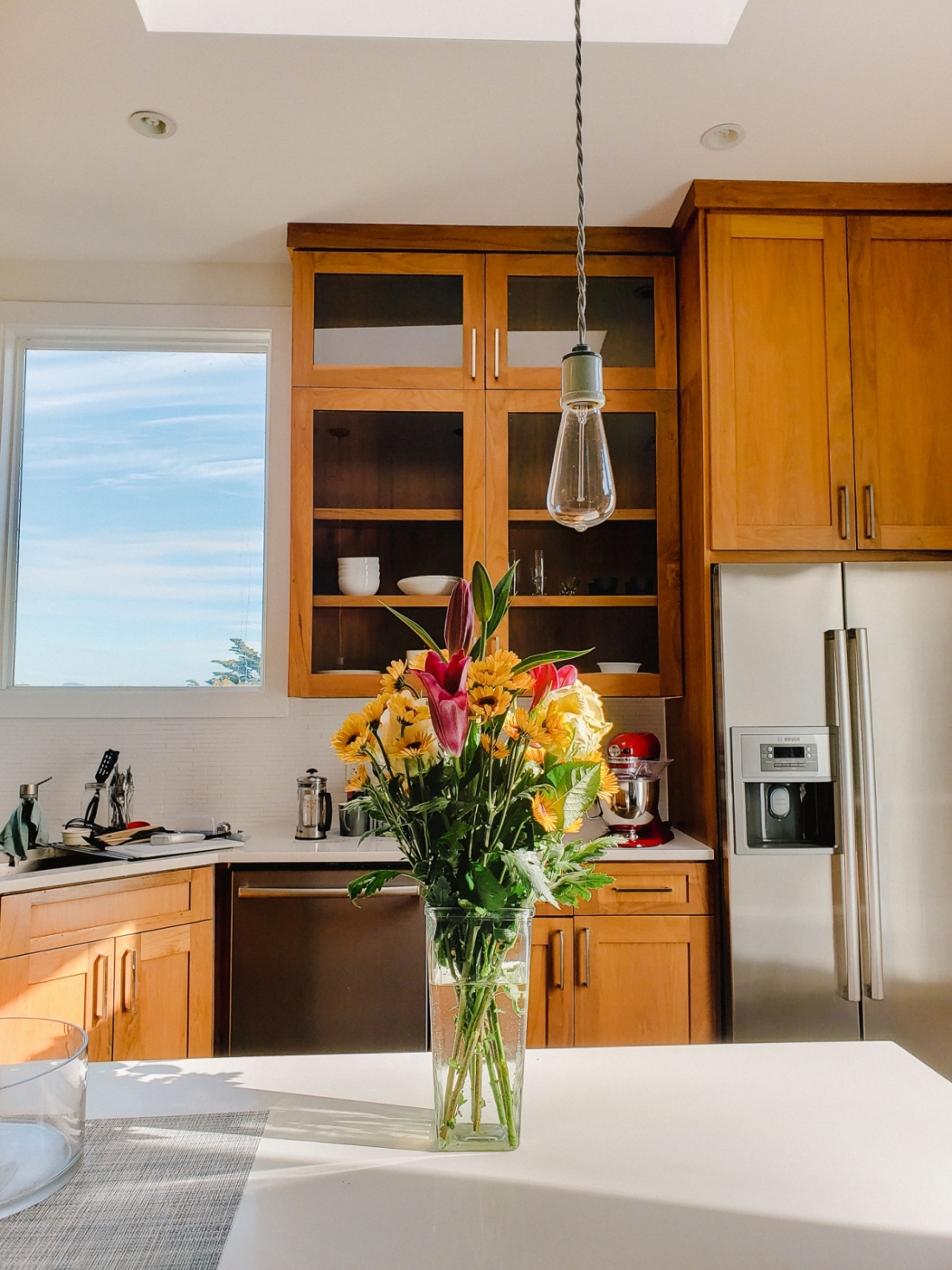
Buying a home in San Francisco is no walk in the park. Besides the rocket-high prices, there is a housing shortage in general, making the real-estate market insanely competitive, even during a pandemic. However, if you are ready to take the plunge and call San Francisco your home – congratulations! – it is a major life milestone. I recently became a first time home owner in this beloved city, and I had no idea what I was doing. After several sleepless nights and making several rookie mistakes, I somehow landed my dream condo. From my recent experience, I have compiled tips that every buyer should know.
1. Set your budget (and stick to it!)
Saving for a down payment for a home in San Francisco is no joke with most properties easily hitting the 7-figure mark (the median home price is $1,650,000 in 2020 during COVID-19). Many buyers put down 20% to increase their chances of loan approval and to help secure a better interest rate. This alone, my friends, is a large chunk of money, so it is important to consider how much you would have left over in your bank account to be able to afford the monthly payments. In addition to the mortgage, also consider interest rates, taxes, HOA dues, utilities, and money for home emergencies.
I personally was very overwhelmed with understanding what I was getting myself into financially, so I worked closely with a financial advisor. After tracking my spending habits and my income closely, we came up with a number that I would be able to afford without needing to eat $1 ramen every day. I set this number as the maximum I would shell out for a home.
2. Get a mortgage pre-approval
The real-estate market is so competitive in San Francisco that buying and selling agents need to know that you are serious about purchasing before investing their time to work with you. Therefore, it is important to get a mortgage pre-approval before you start hunting for homes. Pre-approvals require credit pulls, which means your credit score will be affected. Also, the pre-approval is only good for 60-90 days, which means that if you haven’t found a home in that time span, you will need to renew.
Condo or single family home
If you are buying a condo or a single family home, I recommend shopping around with various lenders until you can find the best interest rate. Large institutions such as Chase, Wells Fargo (where I went with), and Bank of America all offer mortgage loans, and the loan officers are incentivized to match or beat competing interest rates, so don’t be afraid to negotiate.
TICs
If you are interested in purchasing a TIC (tenancy-in-common), this process gets a little bit more complicated. Not every financial institution offers a TIC mortgage. Popular TIC lenders in San Francisco include Sterling Bank, Bank of San Francisco, and Patelco. Typically, interest rates are higher for a TIC loan, and a minimum of 20% down is required. Also, most TIC loans do not offer 30-year fixed mortgage rates. The most they offer is 10 years for a fixed rate, so you will have to refinance afterwards.
3. Create a “must-have” and a “nice-to-have” list
Before jumping in immediately to tour homes, create a list of wants and needs for your future home. I like to do this even before searching for my realtor so that I can communicate clearly which qualities, features, and amenities are important to me. It’s perfectly fine if you can only think of a couple of things. It’s also okay if your list changes as you see more homes in person. However, I can guarantee you this list will make your future house-hunting more efficient, and will help you decide on when to make an offer.
Below is an example of my lists, the must-haves quickly became a useful checklist for every place I toured.
Must-haves
- Top floor
- Lots of natural light
- At least 2 bedrooms
- Gas range stove and dishwasher
- Location: safe, walkable, close to work shuttle
- In-unit laundry
- Central heating installed
- Move-in-ready
Nice-to-haves
- Garage or parking
- 2 bath
- Outdoor space (yard, patio, roof deck)
- Sweeping city views
- Hardwood floors
- Bay windows
- High ceilings
- Central air conditioning installed
- Recently renovated
- In-law unit
- Expansion potential
- Period Victorian or Edwardian charm
A must-have on my list was lots of natural light. Therefore, I chose a home with large bay windows and skylights, making the home bright and airy.
4. Find your new best friend, your realtor
Choose your realtor carefully, and take your time to ensure you find a good match. This person will become your new best friend, your therapist at times, and your spokesperson, so don’t make the decision lightly. I recommend talking to a couple of potential realtors to first see if you get along as people first before moving forward.
Ask your realtor the important questions below:
- How many years have you been an agent?
- Are you full time or part time?
- Do you primarily work in San Francisco? How many homes have you closed in San Francisco?
- How many clients are you currently working with?
- Will you be my primary point of contact, or will I be working with your team?
- What is your preferred method of communication?
- Can you provide references?
Since the San Francisco housing market is so different from everywhere else (including the rest of the Bay Area), it was important for me that my realtor had extensive experience selling and buying here. In addition, I needed my realtor to be available and responsive. From chatting with my realtor, I had to gauge how likable and persuasive they were. This was essential because they would be doing all future negotiations on my behalf.
I ended up being quite lucky and was referred to my power-couple realtors from trusted friends. In case anybody is still looking, I’m happy to give you a referral and can answer any questions you may have.
5. Do your market research
It is important to understand current market trends. Explore websites like Zillow and Redfin to view listings within your price range to get a good sense of what you can realistically purchase.
Single family home
Single family homes at the entry-level price are going strong as folks are seeking more indoor and outdoor space during the pandemic. The competition is fierce due to limited inventory of single family homes in the city. However, the price point is high, and because of the surge in popularity, many homes go for above asking.
TICs
On the other side of the price range, TICs are typically priced lower than a condo for the same size and quality and make a great entry-level home. However, the caveat is that they are a greater risk to own. Besides the unconventional lending, owning a TIC means that you only own a fractional share of the whole building versus owning the unit you’re living in.
Condos
The pandemic has generally dulled the interest for condos, especially for high rises in downtown. Not only have they been sitting on the market longer, but the general trend in price has decreased, presenting condos as a “great buying opportunity.” However, condos that offer outdoor space have surged in popularity.
6. Tour homes in-person
Next comes the fun part – finally touring homes you’ve been stalking on Zillow. From my experience, viewing a house in person is completely different than scrolling through photos or even attending virtual tours. While touring, it is important to carefully examine the condition of the home and not focus too much on the cosmetics. I definitely fell for staging and fancy kitchen backsplashes so I’m not judging. But remember that just because the bathroom is not equipped with a clawfoot tub, it does not mean you should pass. Instead, I would focus on that giant crack in the wall, or that exposed electrical wire.
Some important questions to ask during the open house are:
- When are offers due?
- Why are the sellers moving?
- Are there any unpermitted work? (So many homes in San Francisco have additions without permits which has potential legal and financial repercussions)
- Are there any issues with the property? (This will be in disclosures, but don’t hesitate to ask anyway)
Note that most open houses feature rooms with all of the lights turned on to make the home appear bright. The best way to assess the natural light is to view the property during the day and switch the lights off.
The neighborhood is very important. After viewing the home, explore the perimeters to get a sense of what the area is like. San Francisco is small and compact, which means that the vibe can change dramatically within a few blocks.
Lastly, if you are interested in potential expansion opportunities, contact an architect to walk the property with you. Many times, selling agents will add “expansion opportunity!” in the listing as a way to attract interest. However, the claim is not always accurate, and you may have an opportunity to negotiate later.
6. Go through disclosures very carefully

Congratulations! You found a home you like enough to obtain the disclosure packets. Alright, I’ll be honest with you. Reading these is going to be scary and you’re going to be uncomfortable. Most homes in San Francisco are old, so expect to see common issues such as mold, dry rot, termites, etc. Also, because earthquakes are a thing here, you’ll notice seismic-related conditions that will seem disturbing…hello, landslide zone!
In most other places, these flaws are great grounds for negotiating. In San Francisco, however, a home with pests, mold, and foundation issues will probably still get multiple offers. If you have a lawyer, I recommend going through these documents with them. I do not have a lawyer, so instead I went through everything line-by-line with my realtors. Once I’ve read my first couple of disclosures, I felt comfortable navigating them on my own, and the defects listed in them no longer worried me.
7. Make an offer
Okay, so you decided you fell in love with a home you can envision your future in. Most other cities allow you to ponder for months before you make an offer. However, in San Francisco, you need to act fast; the chances of others also interested are high. This is also the part of the process where you will feel the most vulnerable.
Set the price
Talk to your realtor about a price you would like to present to the buyer. If they are doing their job, they’ve already contacted the seller’s agent to get a sense of what price-range the seller wants and how many other potential offers they have. In combination with market trends, they will be able to advise you on whether to go below, at, or above asking.
Add contingencies
Ask your realtor about contingencies. In San Francisco, it is common for folks to get all cash offers with zero contingencies. In fact, contingencies are frowned upon unless your offer is extremely strong. As a first-time home buyer, the contingency was non-negotiable for me. I absolutely wanted to have a financial contingency (to make sure that I could back out if the loan didn’t come through) and an appraisal contingency (to ensure that I could negotiate if I over-paid). I waived the inspection because most sellers include that in their disclosures.
Write a personal letter
Next comes the offer letter addressed to the sellers. Personalize this – introduce yourself, talk about why you fell in love with their home, and why it is the perfect place for you. Perhaps you are trying to start a family, and the cozy living room with the warm fireplace makes you excited for movie nights with the future kids. Or, maybe you love cooking, and you cannot wait to host your first Thanksgiving around the big kitchen island. The point is to be specific and to be sincere. This can really be the deciding factor if the sellers are on the fence.

In my personal letter, I shared with the owners my love to cook. I explained why this sun-filled, renovated kitchen was the one I see myself making many feasts in.
Negotiations
The hard part is waiting after submitting your offer. It is possible to have your first offer accepted right away. But more often than not, you’ll either get rejected, or go into negotiations. My first offer was rejected and I took it extremely personally because of the care I put into my letter. If this happens to you, remember that this is also business, and rejection is very common when buying a home in San Francisco.
The second offer I made was not accepted immediately either. Instead, the sellers began negotiating. This moment is why you hired your realtor, it is their time to shine! After many back-and-forths, my offer was finally accepted. However, I agreed to pay roughly 110% over asking, but I was able to keep my two contingencies. The ultimate lesson is… be prepared to pay above the listing price to secure the home you love.
8. Escrow
Transfer earnest money
Escrow is when the madness begins. The second your offer is accepted, you have 24 hours to transfer your earnest money (3% of the purchase price) into an escrow account. This shows that you are serious about the transaction. If the sale goes through, it will be applied to your purchase price. If not…well, we’ll get to that later.
Enter contingency period
You will also enter into the contingency period once your offer is accepted. This gives you time to hire an appraiser, inspector, and ensure that your loan will go through. Based on the results of your contingencies, you can either re-open negotiations, or back out without losing your earnest money. However, if you back out after this period, you may either lose that money or get sued by the seller for breaching contract. So my advice here is to act fast.
Closing
Once all contingencies are cleared, you’ll want to ensure that you will close on time (the whole process should take no more than 30 days). Ideally, you have already locked in a 30-day interest rate to protect yourself from any changes. There are many moving pieces during this process, it doesn’t hurt to put on your project manager hat and communicate with your loan officer often to make sure everything is on track.
You will be asked to review, sign and upload so many documents, your head will hurt. You will be stressed, and you may even shed tears. But be thorough and make sure everything is accurate and stored in the correct place to expedite this process.
9. Final walk-through
During the final few days of escrow, you have the option of completing a final walk through of the soon-to-be-yours home! This is to ensure that the property is in the same condition as it was when you first toured it. It is a great opportunity to view the home without any staging furniture, and to make sure there are no new damages. This also includes verifying any agreed upon repairs from the home inspection contingency.
Examine the property meticulously here and take your time. I advise bringing a notebook, your contract, and a phone or camera. If there are any large-scale damages, you and your realtor need to contact the seller to address them.
Below is a list of things to check when conducting your walk-through:
- Walls, Floors, and Ceilings
- Damages can occur during move-out, or problem areas may be revealed without the staging furniture or art covering them.
- Windows and Doors
- Ensure they open and close smoothly.
- Don’t forget the garage door!
- Water fixtures
- Check the sinks, toilets, and baths. Make sure there are no leaks.
- Confirm there is both hot and cold water.
- Kitchen
- Test every appliance to confirm they work properly.
- Check inside, behind, and underneath the refrigerator and dishwater to ensure no leaks and no mold.
- Laundry
- Run the washer and dryer one full cycle.
- Check for mold in the laundry
- Electrical systems
- Test every outlet
- Test every light switch
- Test the AC
- Test the heat
- Test the doorbell
- Exterior
- Check the condition of the roof, gutters, paint, landscaping, fences to make sure there are no new damages
10. Get Your Keys

Once your loan is finalized, and you’re happy with the condition of the property, you are finally ready to close!
Typically on closing day, you meet with your realtors, and the sellers and their agents at the title company. You’ll each sign and review what seems like hundreds of pages of documents. Then, you will have to pay for your closing costs and the down payment. After you drain your life savings and sob hysterically transfer the monies and sign all of the documents, you’ll receive the keys to your new home.
I was beyond elated when I finally got my keys. To this day, I feel nothing but deep gratitude for being able to call San Francisco my home. Also, never having to pay another landlord again feels pretty awesome. Although buying a home in San Francisco takes more preparation and research than most other cities, it was completely worth it for me, and I know it will be for you too.
I’ve always wanted to visit San francisco! I’ve heard so many great things about that city!
San Fran is such an interesting real estate market. Definitely challenging when there is so much competition and it is such an expensive market.
These are all wonderful tips! San Francisco is a beautiful place and a fabulous place to live. Very expensive though…..